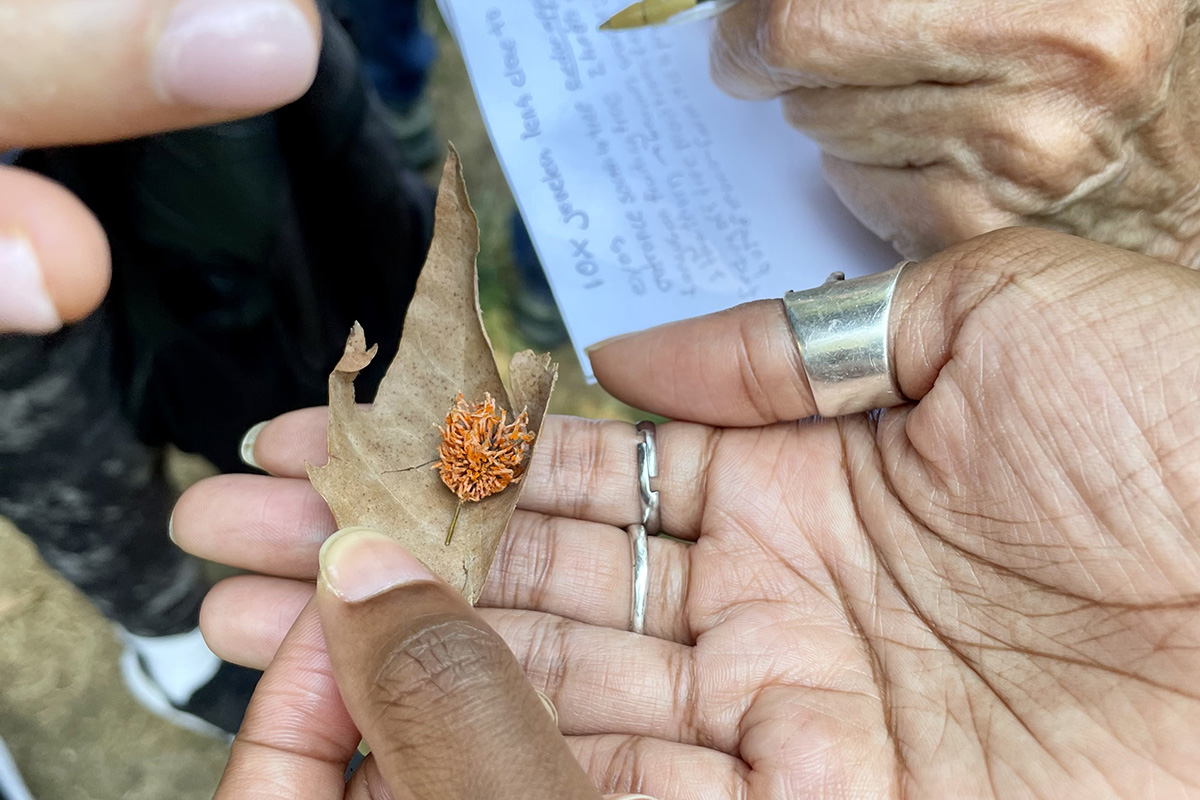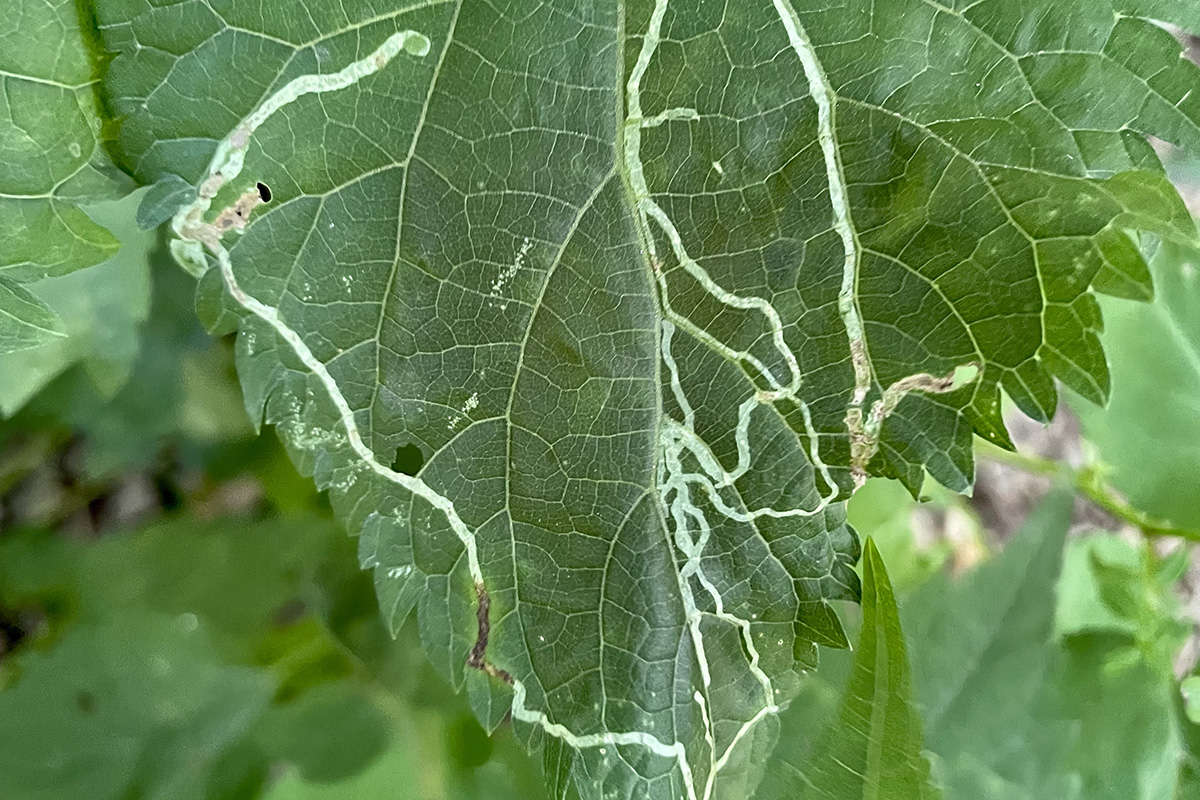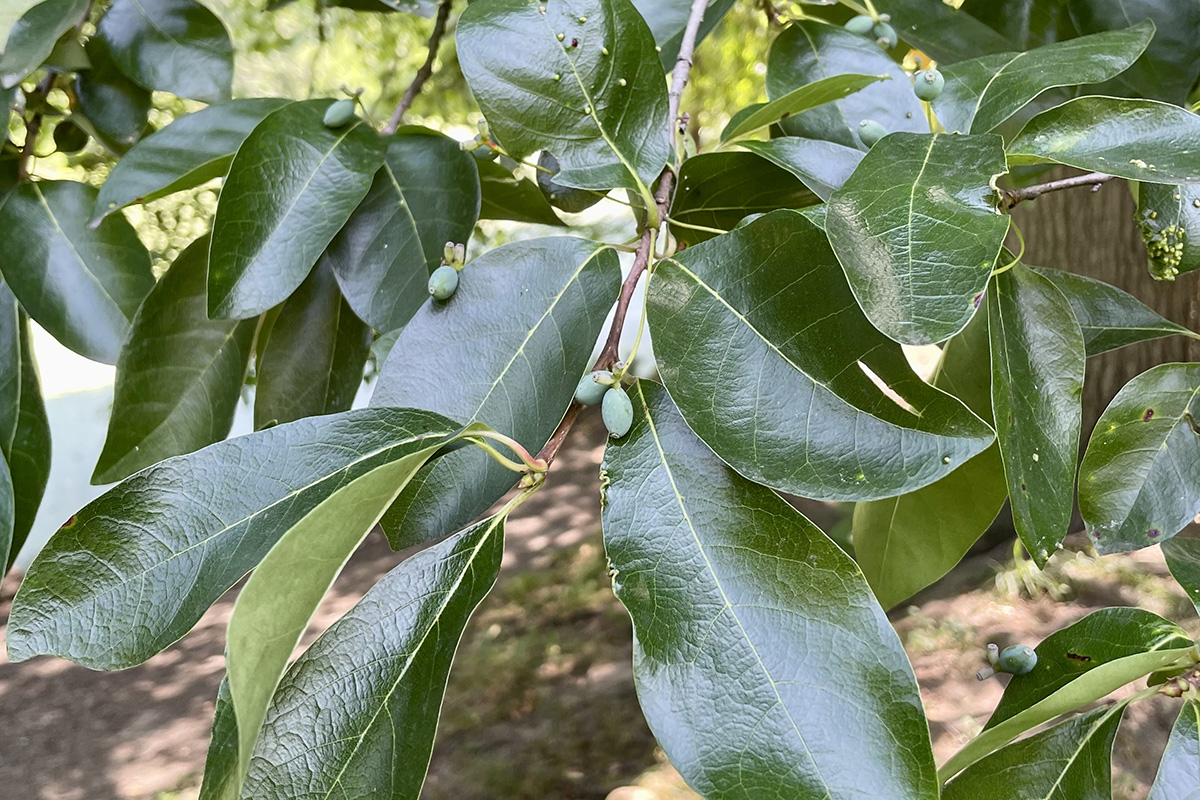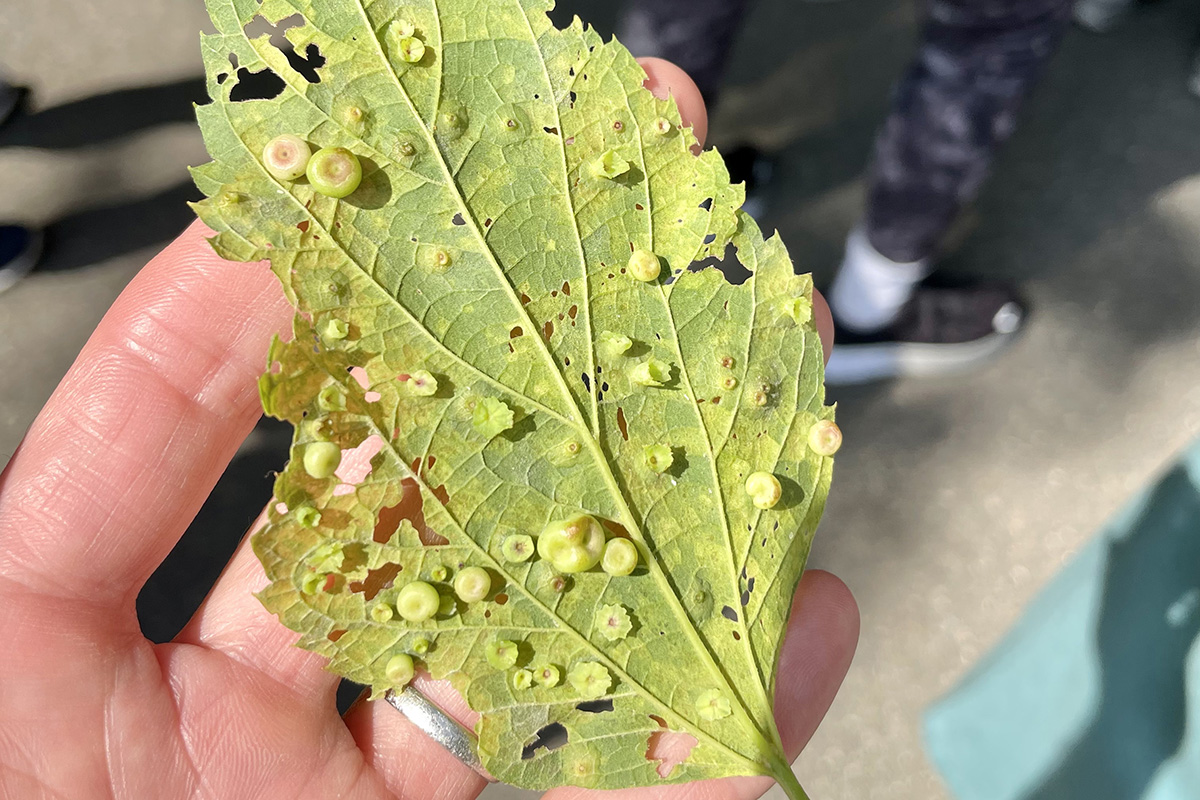Registrar: Richard Davis
Participants: 19
Weather: 78–82 F. Mostly sunny, N winds 5 mph.
Bird Species: 16
Nineteen Linnaeans and botany enthusiasts gathered on a warm sunny morning to wander in available tree shade and light breezes around the Pool and briefly into the Ravine of northern Central Park. Many participants commented on the broad knowledge and enthusiasm of walk leader Regina Alvarez, whose experience in Central Park and in teaching is an excellent combination for transmitting information about the plant life of the Park and the way it has been managed over the years.
She started by lending magnifying loupes to participants, explaining that a jeweler’s loupe at 10x would be best for field study. She demonstrated how to use them by bringing the loupe quite close to the face and resting it against the cheek to hold it near the eye. The object to study must be very near the bottom of the glass.
Our first stop was at a hawthorne tree with quite a bit of cedar-apple rust, which exhibited as small, ball-shaped, reddish clumps with short hairs or tentacles, but is actually a fungus.
She pointed out which plants are native, which non-native, and which invasive. For example, we quickly encountered pokeweed, which is native and produces berries that birds love but are highly toxic to humans. (You can make ink with them.) In contrast, porcelain berry, a non-native invasive from temperate Asia in the grape family, should always be quickly removed from gardens and other habitats, as it will overwhelm and destroy native plant life.
The pokeweed and deadly nightshade sparked a discussion about foraging and the risks to an inexperienced forager. In general, foraging is not advisable in an ecosystem like that of Central Park, which would suffer greatly if thousands of visitors took up the practice.
Virginia knotweed (native) also known as touch-me-not, offered an amusing opportunity to demonstrate seed dispersal, with the seeds popping off and flying to quite a distance. Birds are also fans.
A young black cherry tree’s bark (native) exhibited prominent horizontal lenticels, or striations, that allow for gas exchange—that is, for the plant to breathe. As the plant grows older, as seen lower on the trunk, it develops what looks like burnt potato chip skin. The berry of this tree is beloved by birds and used for the black cherry flavor of soft drinks.
We observed a tulip tree (native) that demonstrated an ability to self prune, with lower shaded branches falling off as the tree grows, leaving a faint mark on the trunk that eventually fades. It is one of our tallest trees, and its long, straight trunk is made of a soft wood that is great for telephone poles, beams, and dugout canoes.
A large oak tree (native) near the birdbath area of the Pool was a fine example of a keystone species—that is, one that many other species depend on thanks to the enormous number of insects they host.
Burdock (non-native) was an example of a biennial, an individual plant with a lifespan of just two years.
The spice bush is a native wetland shrub that offers a fruit high in lipids to birds; it is a form of metabolic energy for migrating birds that is preferable to fruits loaded with sugar. The leaves produce a compound, the spice scent or flavor, that is a predator defense mechanism.
We came upon mugwort, also not native, which was probably brought over by colonists as a medicinal plant. Mugwort, among other plants, produces compounds to deter insects; this can create a detectable odor, which wanes by late summer, after plant reproduction has occurred. Mugwort is an invasive species, taking over open sunny areas.
In the Ravine we spotted some native hydrangea being visited by a native bee. Regina explained that native wild bees are critical for “buzz pollination,” a form of pollination that domesticated bees (honeybees) cannot perform, in which the bee vibrates to dislodge pollen. Plants in the tomato (nightshade) family require this type of pollination to reproduce.
We encountered poison ivy (native), reaching onto the path on a wooden bridge in the Ravine. Regina explained that the Park has a policy of managing rather than eradicating this plant, which produces berries popular with 60 species of birds, as well as the urushiol oil that stimulates an allergic reaction in approximately half the people who come in contact with it.
Species Lists
Birds
Mallard
Rock Pigeon
Mourning Dove
Chimney Swift
Northern Flicker
Red-eyed Vireo
Blue Jay
European Starling
Gray Catbird
American Robin
House Sparrow
American Goldfinch
Common Grackle
Northern Waterthrush
Black-and-white Warbler
Northern Cardinal
Plants
Trees—Native
Black Locust
Honey Locust
Hackberry
American Sycamore
Black Cherry
Tulip Tree
Tupelo Tree (Black Gum)
American Sweetgum Tree
Bald Cypress
Sassafras
Oak Tree
Red Oak
Black Walnut
Red Maple
Red Buckeye
Pin Oak
Hornbeam
Sweetbay Magnolia
Hickory (species)
Serviceberry or Shad Bush
Eastern Redbud
Trees—Hybrid
London Plane
Trees—Non-Native
Weeping Willow
White Mulberry
Ginkgo
Shrubs, Vines and Flowers—Native
Sweet Pepperbush
Purple Flowering Raspberry
Pokeweed
Hackberry
Blackberry
Jewelweed
Poison Ivy
Woodland Sunflower
Wolffia (Watermeal)
Duckweed
Virginia Knotweed
American Plantain
White Baneberry (Doll’s Eyes)
Spicebush
Wild Bergamot (Beebalm)
Native rose
Arrowwood viburnum
White Wood Aster
White Snakeroot
Green-headed Coneflower
Purple Coneflower
Staghorn Sumac
Cardinal Flower
Blue Lobelia
Joe-Pye Weed
Black Raspberry
Witch Hazel
Elderberry
Lizard’s Tail
Shrubs, Vines and Flowers—Non-native
European Plantain
Mugwort
Wineberry
Porcelain Berry
Japanese Knotweed
Bittersweet Nightshade
Devil’s Walkingstick
Burdock Weed
Ferns – Native
Ostrich Fern
Marginal Wood Fern
Christmas fern
Grass—Native
Bottlebrush Grass
Grass—Non-native
Phragmites
Mammals
Eastern Gray Squirrel
Eastern Chipmunk
Brown Rat
Herps
Red-eared Slider





